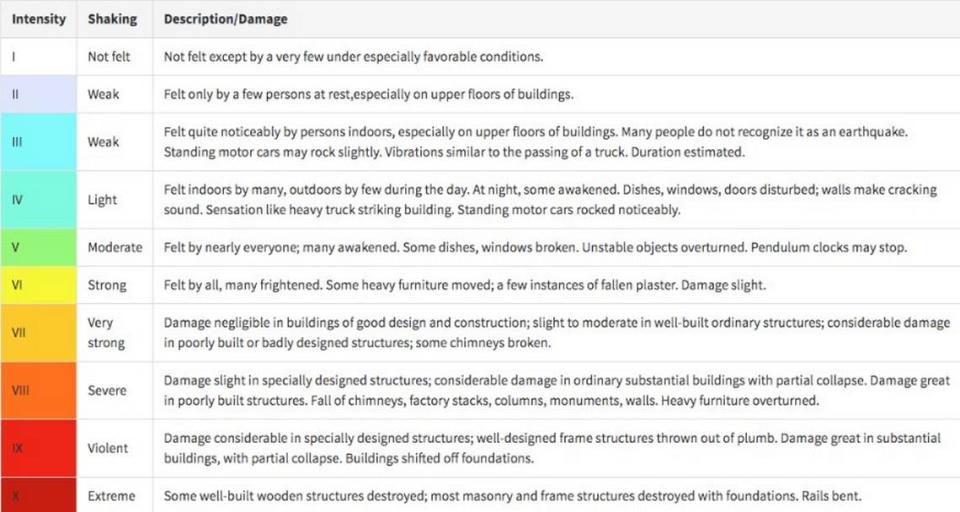An earthquake shook Northern California. Here’s why some people felt it and others didn’t
Some residents felt the moderate earthquake Thursday that jolted parts of Northern California while others were completely oblivious to the buildings that rattled around them.
The 5.5 magnitude quake that struck at 4:19 p.m. was centered in the waters of Lake Almanor in northwestern Plumas County and rattled cities from Redding to Elk Grove. The largest of the aftershocks, measuring magnitude 5.2, struck several hours later at 3:18 a.m. Friday.
Residents of Sacramento reported feeling the earth tremble — but not everyone.
“A lot of what you feel depends on what kind of building you’re in and what you’re doing at the time,” said seismologist Dr. Julian Lozos.
In a message to The Sacramento Bee, the associate professor at Cal State Northridge said wooden framed buildings typically flex more than concrete.
Underlying geology also plays a factor in what you feel.
People who live near rivers and streams will feel the earthquake more intensely because the soft, wet ground around them amplifies the rattle.
Why did I feel the earthquake and others didn’t?
Feeling the ground move sometimes depends on how you’re standing, sitting or moving, according to a 2017 American Geophysical Union story.
If you felt the quake and the person next to you didn’t, they were in its radius but “not paying enough attention,” Austin Elliott, an earthquake scientist at the U.S. Geological Survey, wrote on the union’s blog. People in motion or in loud environments were also less likely to feel anything.
The United States Geological Survey’s interactive map of the earthquake Thursday pinpoints its epicenter roughly 23 miles southeast of Lassen Peak, 28 miles west-southwest of Susanville and 50 miles northeast of Chico.
The rattle was felt about 120 miles south in Sacramento and Elk Grove, north to Redding and east to Reno, according to previous Bee reporting.
Earthquake, aftershocks rattle Northern California. Rumbles at Lake Almanor felt in Sacramento
Large earthquakes in Sacramento are rare but your chances of feeling one increase if you are at rest or in a quiet space at the time of the natural disaster.
Minor earthquake motion felt at NWS Sacramento. Blinds swaying slightly. #cawx
— NWS Sacramento (@NWSSacramento) May 11, 2023
UPDATE: Shortly after 4 pm today, northern California experienced a magnitude 5.5 earthquake. Our Business Services team made rounds looking for damage in our two Sacramento buildings. The only known impact was one book that fell from a shelf.
No word on the title of the book. pic.twitter.com/DdADqCfbdn— CA State Library (@CAStateLibrary) May 12, 2023
I’ve lived in Sacramento all my life, and I’ve only ever felt 5 earthquakes living here, and 2 of them were today. Never thought I’d be able to say that.
— Casey Sandretto (@Sandrettooooo) May 12, 2023
If you were in a high rise like those situated around downtown Sacramento, the higher motions on the upper floors increased the shaking intensity, according to AGU, therefore improving your chances of feeling an earthquake.
“Someone on an upper floor of an office building will likely notice more than someone in the ground floor of a single-family home,” Lozos said.
Those inside will notice the rattling of objects compared to someone outside who is unaware of the buildings shaking around them.
Typically at low levels of shaking, there’s a random chance you’ll feel it.
How are earthquake magnitudes measured?
In the United States, the Modified Mercalli Intensity Scale is used to determine the magnitude of earthquakes.
The scale classifies the intensity of an earthquake using a ranking system based on observed effects instead of mathematics.

What triggers an earthquake and how are they measured? A California physicist answers
What do you want to know about life in Sacramento? Ask our service journalism team your top-of-mind questions in the module below or email servicejournalists@sacbee.com.

